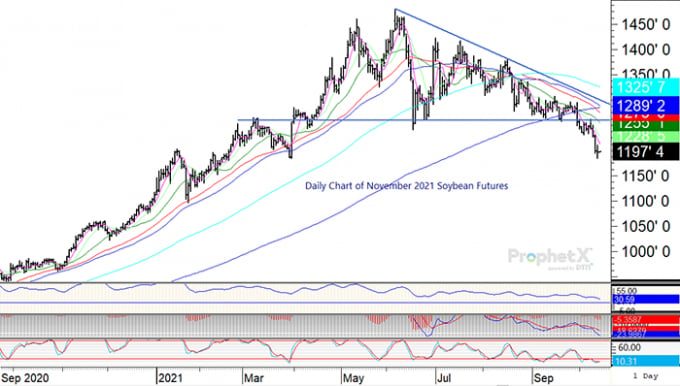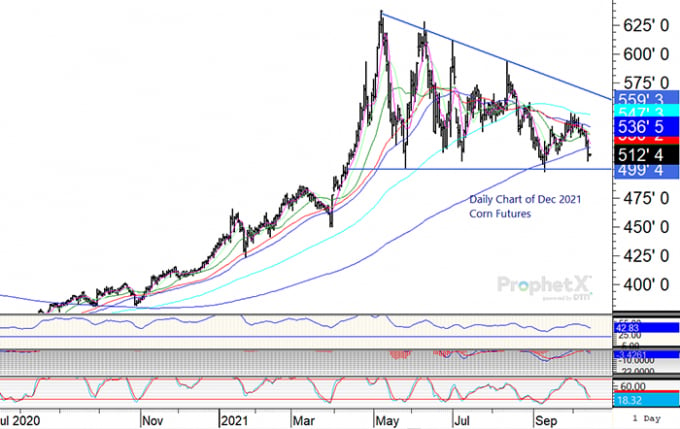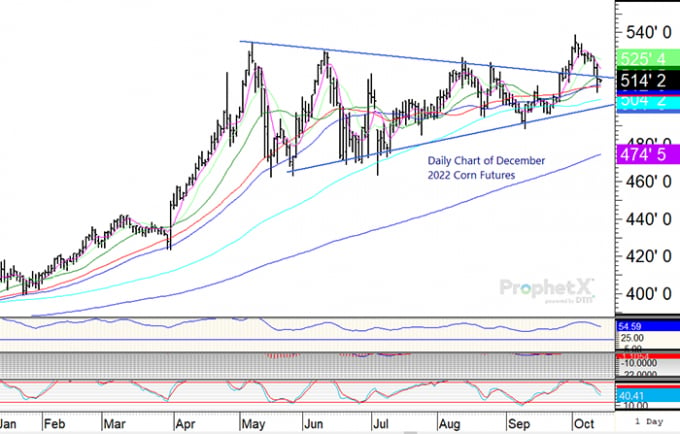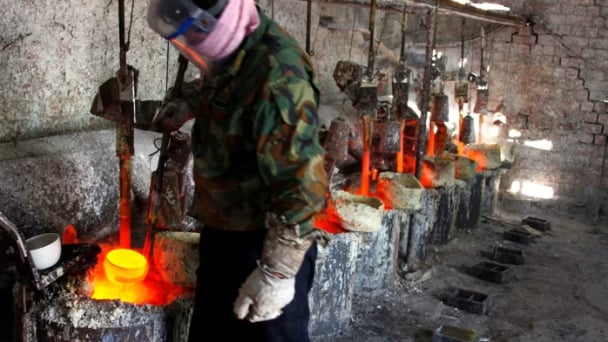June 16, 2025 | 11:50 GMT +7
June 16, 2025 | 11:50 GMT +7
Hotline: 0913.378.918
June 16, 2025 | 11:50 GMT +7
Hotline: 0913.378.918

How changes in carryout impact grain prices - now and in coming months. Photo: FP
The thought (or perhaps hope) was that ending stocks for corn and soybeans were tight enough, and that, in return, would keep prices firm throughout harvest.
But that sentiment changed this week when the USDA increased carryout levels for both corn and soybeans higher than trade had anticipated.
Technically speaking, the corn and soybean futures markets have been giving topping signals since early summer; bearish reversals on charts, prices unable to trade higher than technical resistance levels on charts, and USDA reports that were just not quite friendly enough to justify another leg higher.
Then the rains came in August. Then the hurricane, which shut down U.S. grain exports at the Gulf due to grain terminal damage. The icing on the cake was the Quarterly Stocks report, when USDA found more old crop soybeans.
Prior to August, for the most part, corn and soybean prices had been trading in a sideways consolidation pattern, waiting for fresh news to emerge to justify a price breakout. Farmers were hoping for higher prices. However, USDA emphatically said otherwise earlier this week on the October WASDE report. The report shows bigger old crop supplies of corn and soybeans which translates into bigger new crop supplies of corn and soybeans -- and ultimately lower prices.

Looking back, you can see in this image how the ending stocks for soybeans got smaller, beginning last fall. Every time the ending stocks got smaller; the soybean futures price inched another notch higher. Then late last spring into early summer, ending stocks on paper, according to USDA, started to slowly increase. Once ending stocks were perceived to be getting larger, that was then the price high for soybean futures.
The July 2021 futures contract had a price high of $16.67-1/2 on the day of the May 12 USDA report. For new crop, there was an early price spike high on the May 12 USDA report of $14.61 using November 2021 futures. Then the ultimate price high for November 2021 soybean futures occurred just days before the June 10 USDA report, coming in at $14.80.
Note how ending stocks for the 2021-22 crop went from 140 million bushels up to 155 million bushels in June. That increase in ending stocks sealed the deal for any additional price rally. Then you can see how on the July and August USDA reports, new crop soybean ending stocks stayed at 155 million bushels, keeping the November 21 soybean futures price in a sideways holding trade pattern.
As soybean ending stocks then continued to increase on each monthly USDA report, you can see how the price of soybean futures began to decrease. And now here we sit with new crop ending stocks potentially as large as where they were nearly one year ago. And the price of soybean futures at that time was closer to $10.
Will that be the price fate for soybeans again? Much depends on South American weather during their heart of their growing season during January and February. Also, current perception is that due to high input prices, many farmers may plant higher soybean acres next spring, which would lead to higher endings stocks.

Ending stocks for corn for the 2020/21 season are still substantially lower than one year ago. One year ago trade was battling the notion of 2.5 billion bushels of corn carryout and $3.00 corn. Ending stocks for the 2020/21 season are half that, with the most recent USDA report pegging supplies at 1.236 billion bushels.

Similar to soybeans, as corn ending stocks got smaller and smaller, futures prices went higher and higher. Prices peaked in spring with $7.35 July 2021 futures occurring just days before the May 12 USDA report. While ending stocks did get slightly tighter in summer months, futures prices did not increase much, and instead local cash markets and basis did the work to reflect tight supplies as the July 2021 contract expired, and September became front month.
Note that similar to the soybean story, once the perception was that ending stocks were growing, corn prices started to slither slowly lower.
And here prices sit. Old crop ending stocks are without a doubt still historically tight. Basis continues to reflect that. But looking ahead to the 2021-22 crop year, ending stocks are looking like they may be at a potentially comfortable 1.5 billion bushel level.
Back in January, February and March of 2020, the 2020-21 ending stocks sat at 1.5 billion bushels for three months, and corn prices traded sideways for those three months with July 2021 corn futures trading between $5.00 support and $5.50 resistance on charts. Huh. Pretty darn similar to what the Dec 2021 futures contract is doing right now. As well as the Dec 2022 futures contracts. Why? Because corn carryout is back to 1.5 billion bushels (for the 2021-22 crop year). For the moment, 1.5 billion bushels of carryout seems to justify $5.00 corn futures.

As long as corn carryout for the 2021-22 crop year do not get larger than 1.5 billion bushels, we may see $5 corn futures stick around for a while. Especially since input costs are so bloody high, most farmers tell us that they need $4.75 to $5 cash corn to justify planting corn next spring!
Looking ahead, trade will continue to monitor three things: the value of the U.S. Dollar, U.S. demand for corn and soybeans (exports, biofuels, and feed) and South American weather.
Just remember, if perception is that ending stocks are growing, corn and soybean futures prices will continue to slide lower. However, if perception is that ending stocks are starting to again get tighter, that will be supportive for prices going forward.
(Farmprogress.com)

(VAN) Extensive licensing requirements raise concerns about intellectual property theft.

(VAN) As of Friday, a salmonella outbreak linked to a California egg producer had sickened at least 79 people. Of the infected people, 21 hospitalizations were reported, U.S. health officials said.

(VAN) With the war ongoing, many Ukrainian farmers and rural farming families face limited access to their land due to mines and lack the financial resources to purchase needed agricultural inputs.

(VAN) Vikas Rambal has quietly built a $5 billion business empire in manufacturing, property and solar, and catapulted onto the Rich List.

(VAN) Available cropland now at less than five percent, according to latest geospatial assessment from FAO and UNOSAT.

(VAN) Alt Carbon has raised $12 million in a seed round as it plans to scale its carbon dioxide removal work in the South Asian nation.

(VAN) Attempts to bring down the price of the Japanese staple have had little effect amid a cost-of-living crisis.